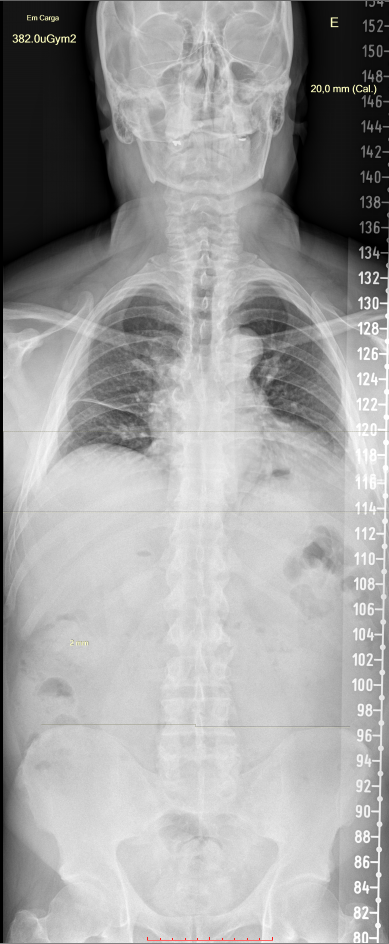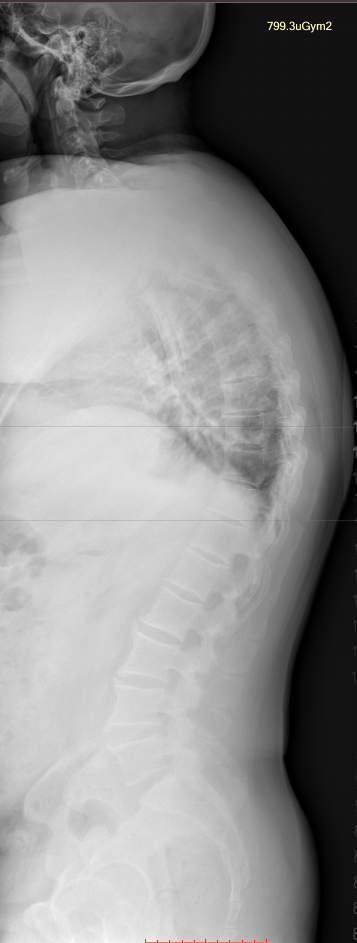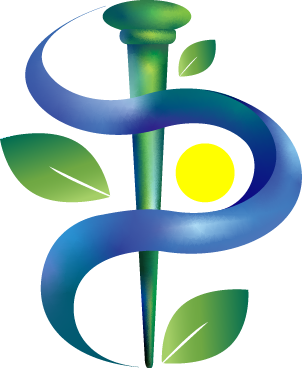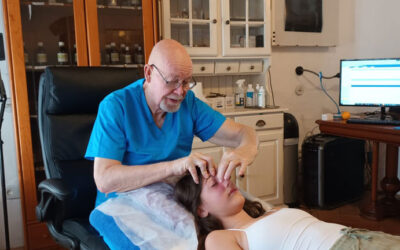Paulo C. is 49 years old male and has been a driving instructor for the last 25 years.
Paulo attended the clinic complaining of pain in the neck, between the shoulder blades and lower back radiating into the left buttock and left upper leg. He claims the problem has been coming on for many years but this last six months has prompted him to visit his family doctor and orthopaedist.
He suffered a myocardial infarction about 15 years ago and was prescribed antihypertensives and cholesterol reducing drugs. He was also prescribed anti-inflammatories for the spinal pain.

A radiological study of the spine was performed in an extra-long technique, standing, barefoot; There is the distance of 2 meters from film focus at perpendicular views. Accentuation of dorsal kyphosis and lumbar lordosis. There are no significant changes in the physiological curvatures in the frontal piano. Elevation of the right iliac crest of 2 mm. In the study carried out in frontal view, neutral profile in hyperflexion and hyperextension, we observed uncodiscarthrosis with dense osteophyte and bordering of the vertebral plateaus at C4-C5, C5−C6 and C6-C7.
The uncus are small bony growths which are observed particularly on cervical vertebrae. They are located on both size of the vertebral body. They serve to connect to adjacent cervical vertebrae and maintain the stability of the latter. They may be affected by osteoarthritis lesions and abnormal ossification. It is considered natural wear of bones and cartilage.
This vertebral condition is common among seniors. On average, it affects 60% of people over 60 and 25% of people under 40. Apart from age, people at risk of developing on co-disc car process are those people carrying out professional activities in a static sitting position and those who are to sedentary.

On examination, Paulo showed a pelvic instability with the physiological short-leg on the left side, rigidity in the dorsal and cervical vertebrae and compression of the left occipito-atlantal joint.
His treatment involved prolotherapy injection to the left sacroiliac ligaments and lumbosacral ligament. The pain in the leg and lower back disappeared after three minutes.
He was told to return one week later for osteopathic adjustments to the neck and upper back.


0 Comments